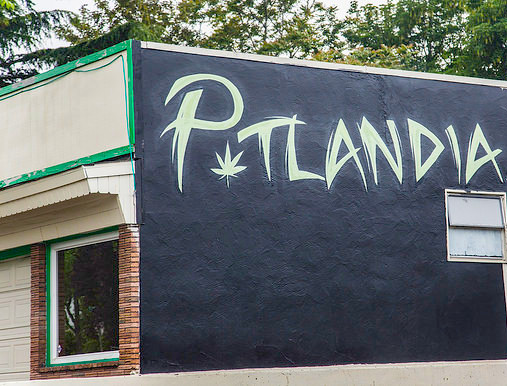Oregon’s New Marijuana Laws: The Last Word on the 2015 Legislative Session
 An incredible amount happened in Oregon’s marijuana (and hemp) space leading up to the close of the legislative session on Monday, July 6. Though HB 3400 was certainly the largest piece of the puzzle—as it delineates the commercial cannabis market in Oregon—other significant legislative developments also occurred. Here’s a quick recap:
An incredible amount happened in Oregon’s marijuana (and hemp) space leading up to the close of the legislative session on Monday, July 6. Though HB 3400 was certainly the largest piece of the puzzle—as it delineates the commercial cannabis market in Oregon—other significant legislative developments also occurred. Here’s a quick recap:
June 30 – HB 3400 was signed into law. In a series of posts, I wrote about aspects of the bill including an initial overview, as well as the law’s residency requirements and investor requirements.
July 1 – Recreational use of marijuana became legal in Oregon, per Measure 91. Accordingly, a stately bong was presented to Senator Ginny Burdick.
July 2 – The temporary sales program, SB 460, won final legislative approval. We expect Governor Brown will sign and sales will begin on October 1.
July 2 – Senate Joint Measure 12, urging Congress to declassify marijuana as a Schedule I drug, was adopted (FWIW).
July 3 – HB 2041 won final legislative approval. The bill imposes a state sales tax — in a state that HATES sales tax — of 17% on marijuana. Local governments would be allowed to tack on an additional 3%.
July 6 – The Senate surprisingly rejected HB 2668, which would have placed a two-year moratorium on most hemp production in Oregon (more on this soon).
Of all these legislative actions, the biggest by far was HB 3400, because it sets the market. Now that law has been on the books for over a week, we have had some time to review and parse its provisions. Here is a rundown on some of the great and not-so-great things about the new law.
Great Things About HB 3400
– Allows for vertically integrated cannabis businesses. As contemplated by Measure 91, the Oregon Liquor Control Commission (OLCC) will make four license categories available to market participants: grower, processor, wholesaler and retailer. Applicants are allowed to possess all four licenses, if approved. So, a single business could run all aspects of a “seed to sale” enterprise if it so desires.
– Reduced penalties for marijuana crimes. Not only does HB 3400 cancel or reduce various penalties for marijuana offenses, but it matches those penalties more closely with sentences for alcohol-related crimes. Also, it will be easier for past and future marijuana offenders to have their sentences expunged to preserve their employment, housing and education prospects.
– Product safety rules. Marijuana products must meet standardized testing procedures to protect consumers from mold, mildew and other contaminants — such as the high pesticide concentrations found in an investigation conducted by The Oregonian. Also, marijuana-laced edibles cannot be contained in packaging attractive to children.
- Research opportunities. We have written about the problems stemming from a lack of scientific cannabis research here and here. HB 3400 addresses this by allowing the OLCC, in conjunction with the Oregon Health Authority (OHA) and Oregon Department of Agriculture (ODA), to establish a program identifying and certifying private and public researchers of cannabis. It’s not research funding, but it’s a start.
– Labor protections. The new law gives marijuana handlers the right to organize for collective bargaining purposes, and it affords whistleblower protection for any employee reporting violations in good faith to the OLCC.
- Changes to the medical program. There are lots of tweaks here, including registration and identification requirements for cardholders, growers, processors and dispensaries; additional licensing requirements; and requirements for medical growers to track and report their inventories. Despite these provisions, the bill avoided some of the more dramatic changes feared by defenders of Oregon’s 17-year medical marijuana program.
Not-So-Great Things About HB 3400
– Allows for local bans. Marijuana businesses can be barred by a vote of a city council or county commission in the 15 eastern Oregon counties where at least 55 percent of voters opposed Measure 91. In the rest of the state, voters have to approve any attempt to ban these businesses. If there’s a silver lining, it’s that any locality that bans any type of marijuana business cannot implement a local tax.
- Investment and ownership rules are still hazy. Rather than expressly provide that out-of-state investment will be allowed, HB 3400 is silent. Rather than allow for out-of state-ownership of cannabis companies, HB 3400 mandates an initial, two-year residency requirement for “applicants.” At the same time, the law fails to define what constitutes an applicant or how ownership of an “applicant” business will be construed for licensure purposes. These gray areas give the OLCC a wide berth in its rulemaking process, which may or may not result in barriers to entry for industry players.
– Zoning and land use issues are only partially resolved. The new law identifies marijuana as a “crop” for purposes of farm use, which can only be used on land designated for exclusive farm use. The law then directs the OLCC to request a land use compatibility statement from each relevant city or county. Without more, the law creates uncertainty for would-be entrepreneurs who cannot know whether certain locations will be viable.
At the end of the day, HB 3400 is on the books and we should expect the OLCC to issue temporary administrative rules by late September. Until then, we can catch our breath and hope for a few signatures from Governor Brown. Business owners in the interim should take required steps to enter Oregon’s newest industry.
– Vince Sliwoski, for the Canna Law Blog
Attorney with Harris Moure
